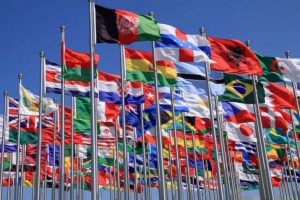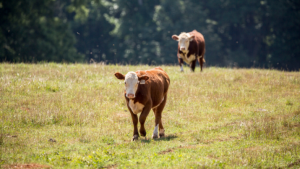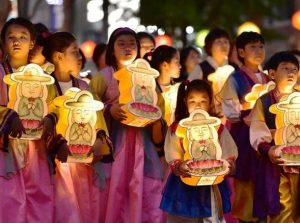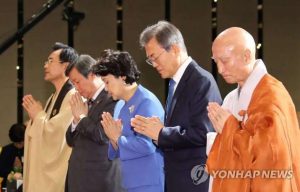In the United States, two shootings occurred within two weeks of each other: the white supremacist attack in Buffalo, New York that killed 10 black people and injured three others on 14 May, and the Robb Elementary School shooting in Uvalde, Texas on 24 May, which led to the deaths of 19 students, two teachers, and the perpetrator. The US is now marking a grim 10-year milestone since the shooting at Sandy Hook Elementary School in Newtown, Connecticut, in which 26 people were murdered on 14 December 2012.
Incredibly, these are only the most prominent shootings in the US. According to BBC News: nearly “53 people are killed each day by a firearm in the US,” and in 2020, “more than 45,000 Americans died at the end of a barrel of a gun, whether by homicide or suicide, more than any other year on record.” (BBC News)
American gun culture is unique. The Swiss, for comparison, also have a high level of gun ownership, yet there are nowhere near comparable statistics when it comes to gun crime, even factoring in Switzerland’s much smaller population. There have always been Americans—and non-Americans—who have asked whether there is something fundamentally paralyzed in American society. It seems that the federal and state governments are unable or unwilling to listen to public opinion and mobilize political capital against a maximalist interpretation of the Second Amendment—an interpretation promoted by not only business interests but also by ideological supporters. This maximalist interpretation feels like a creed that at times can seem sacrosanct.
This debate perhaps may never be resolved. Indeed, perhaps the American majority have spoken: guns are popular. There are 120.5 firearms for every 100 residents in America, meaning that there are easily more guns than people. We also know that gun ownership goes up by the millions after a mass shooting. This happened after Sandy Hook (a three-million unit increase) and after the 2015 San Bernardino terror attack (a 1.6 million unit increase). This phenomenon goes against trends seen in other developed economies. Following the shootings in Uvalde last month, Canada’s government has decided to expand background checks, ban 1,500 types of military assault weapons, and launch a buyback program. Previously, the UK and Australia have also taken similarly decisive action after isolated incidents of gun violence, decisively limiting gun crime in said nations. In contrast, guns are here to stay in the US and, more importantly, the national mindset that advocates for the necessity, use, and glorification of guns is also here to stay.
The situation is so grim that just this week The New York Times used the Buddhist allegory of the poisoned arrow in a feature chronicling this apparently callous disregard for life—whether it is death by guns or deaths from COVID-19, which has officially taken the lives of one million Americans. Faith and politics journalist Elizabeth Diaz quotes Asian-American Buddhist author Chenxing Han as saying:
The arrow piercing his flesh, the man demands answers. What kind of arrow is it? Who shot the arrow? What kind of poison is it? What feathers are on the arrow, a peacock’s or a hawk’s? But all these questions miss the point, the Buddha tells his disciple. What is important is pulling out that poison arrow, and tending to the wound.
(The New York Times)
The US, Diaz writes, has not only “learned to live with mass shooting after mass shooting,” but has also seemingly grown accustomed to COVID-19 being the third leading cause of death in the country. Meanwhile, “police killings of unarmed Black men continue long past vows for reform.” (The New York Times) The problem—the arrow in the heart—is mass, unnecessary deaths.
Non-Americans have long struggled to understand the American willingness to live with death. “America is killing itself,” an editorial in the French newspaper Le Monde observed after the Uvalde shooting. All this death, and the “paralysis over how to overcome it,” led The New York Times to observe that the country is struggling with some basic questions: “Has our tolerance as a country for such horror grown, dusting off after one event before moving on to the next? How much value do we place in a single human life? Is there not a toll that is too high?” (The New York Times)
The proliferation of firearms, and the background hum of violent episodes all over the US, can be blamed on business interests but also on a capitalist economy, on consumer demand. Where does this demand come from? The Buddha recognized a vicious cycle of violence that begins in the mind. In the Mahānidānasutta the Buddha says to Ananda that feelings create the conditions for craving, which leads to the possession and attachment of things, both material and immaterial.
Craving is a cause of seeking. Seeking is a cause of gaining material possessions. Gaining material possessions is a cause of assessing. Assessing is a cause of desire and lust. Desire and lust is a cause of attachment. Attachment is a cause of ownership. Ownership is a cause of stinginess. Stinginess is a cause of safeguarding. Owing to safeguarding, many bad, unskillful things come to be: taking up the rod and the sword, quarrels, arguments, and disputes, accusations, divisive speech, and lies. . . . Suppose there were totally and utterly no safeguarding for anyone anywhere. When there’s no safeguarding at all, with the cessation of safeguarding, would those many bad, unskillful things still come to be?
No, sir.
That’s why this is the cause, source, origin, and condition for the origination of those many bad, unskillful things, namely safeguarding.
Mahānidānasutta (translated by Ajahn Sujato)
The psychology of ownership, stinginess, and safeguarding has been combined with a deep cultural and social attachment to guns. There reigns a quasi-folk memory of guns as having colonized the country, secured its borders, and saved its independent, free people. They are as culturally significant as swords in European and Asian national myths, and relics in Christian belief. The hold that inanimate objects—or even the idea of said objects—have over the collective psyche can be an almost unbreakable grip. Yet the right questions are being asked: is this grip worth so much death? Can it not be loosened at least slightly, so that a virtuous cycle of mutual trust can be built among fellow citizens, dissolving the need for safeguarding and loosening the grip of the gun as the ultimate arbiter, dispenser, and provider of physical safety in the American imagination?
Yet we must be lucid: things look bleak in the short term. To transform society by starting with the mind has always been the go-to answer for Buddhists in regard to almost any social ill, and rightly so. Yet it has become clear that, true to Mahayana philosophy, mind and matter are not separate, and the proliferation of guns is rooted in a specific mindset toward guns that would come at a cost too high for any other country or society. This mindset will always be a piece of America, but it need not be destructive if it can occupy a middle path away from the maximalist interpretation of gun ownership. Placing heavy restrictions on the purchase of military-style assault weapons would be a start. Even if we accept the gun-owner’s argument that “guns do not kill people, people kill people,” surely fewer people being able to buy fewer military-grade weapons will mean, logically, fewer deaths?
If a concession cannot be made on part of the maximalists, then deep national suffering—including on part of the maximalists—and the ongoing psychosis of violence is the natural price to pay.
See more
America’s gun culture – in seven charts (BBC News)
The Arrow in America’s Heart (The New York Times)
Texas shooting: America is killing itself, as the Republican Party looks the other way (Le Monde)
The Great Discourse on Causation (Sutta Central)
Related features from BDG
Buddhistdoor View: On the Moral and Traditional Complexities of Abortion
Healing the World: The First Problem
Sakyadhita Spain Symposium 2020: Roshi Joan Halifax
Buddhistdoor View: Reckoning with Those Who Do Wrong
Related news reports from BDG
Barre Center for Buddhist Studies Hosts Family Members and Survivors of Gun Violence
Buddhist Monks Lead Vigil for Victims of Thailand Mass Shooting















The Buffalo attack was NOT a White Supremacist attack. Why don’t you report the Wisconsin Christmas attack as a Black Supremacist attack? You just lost me as a reader. Using CNN and the NYT as sources when they both clearly are hate whitey news organizations. Good Bye.